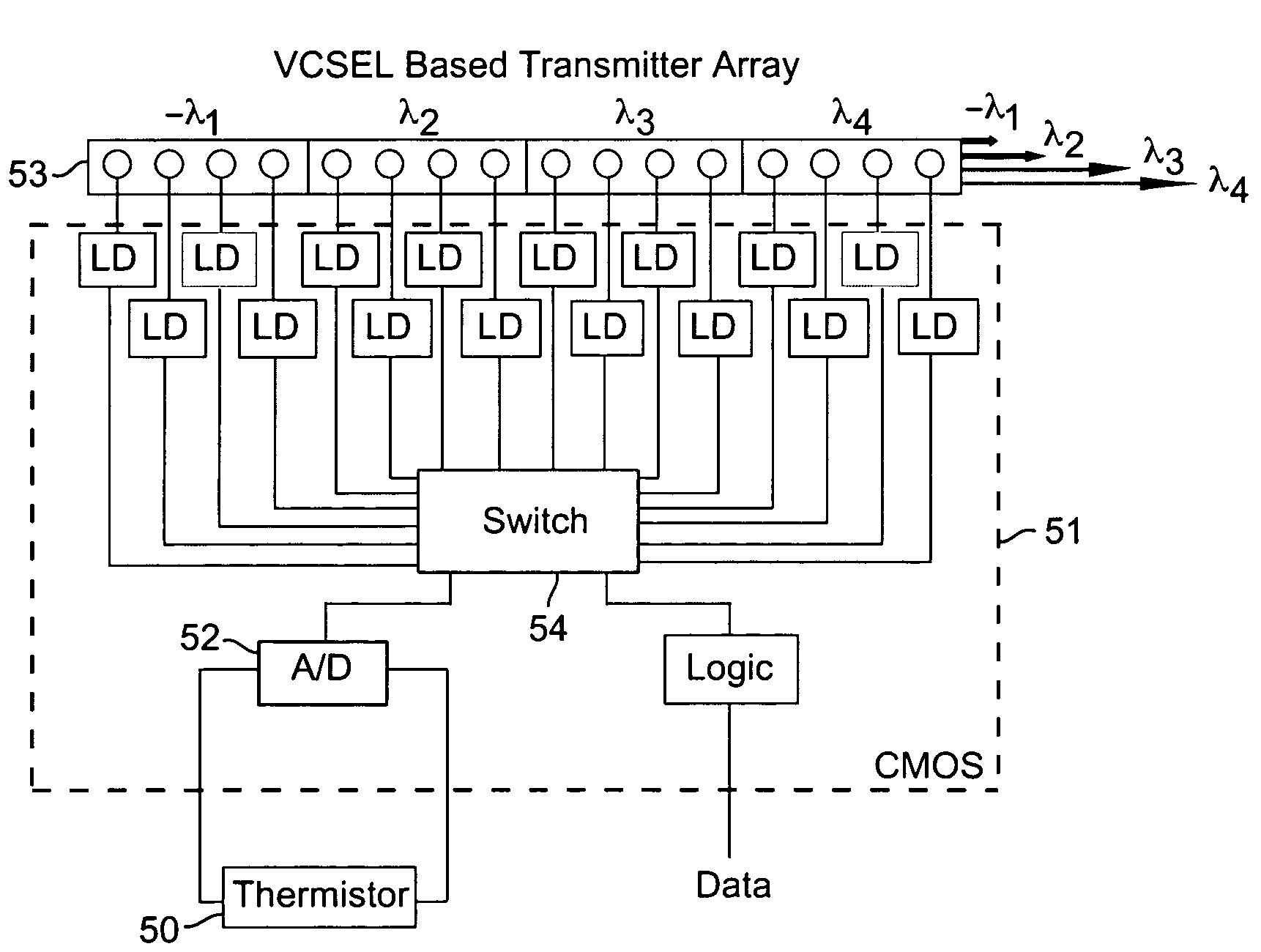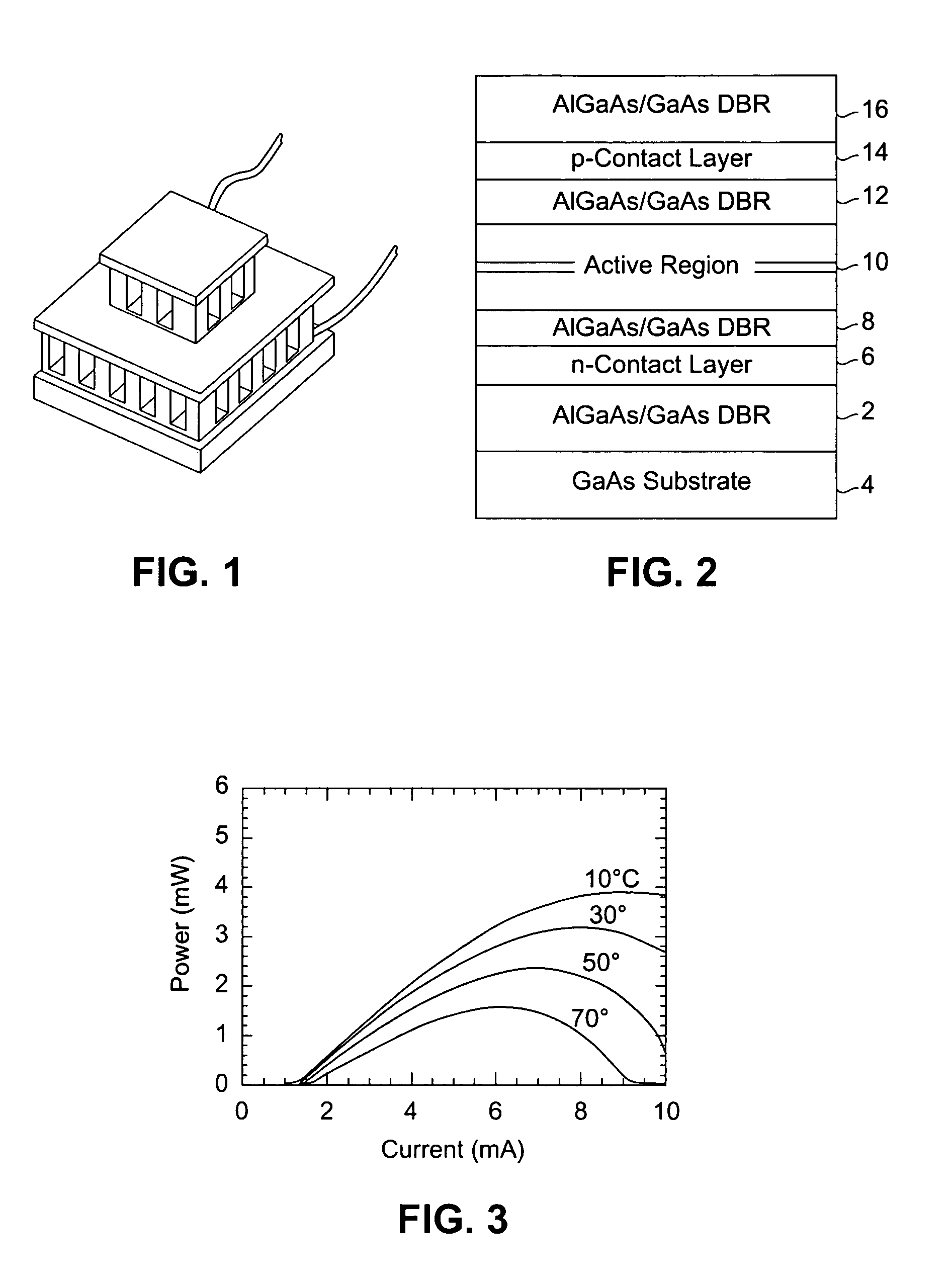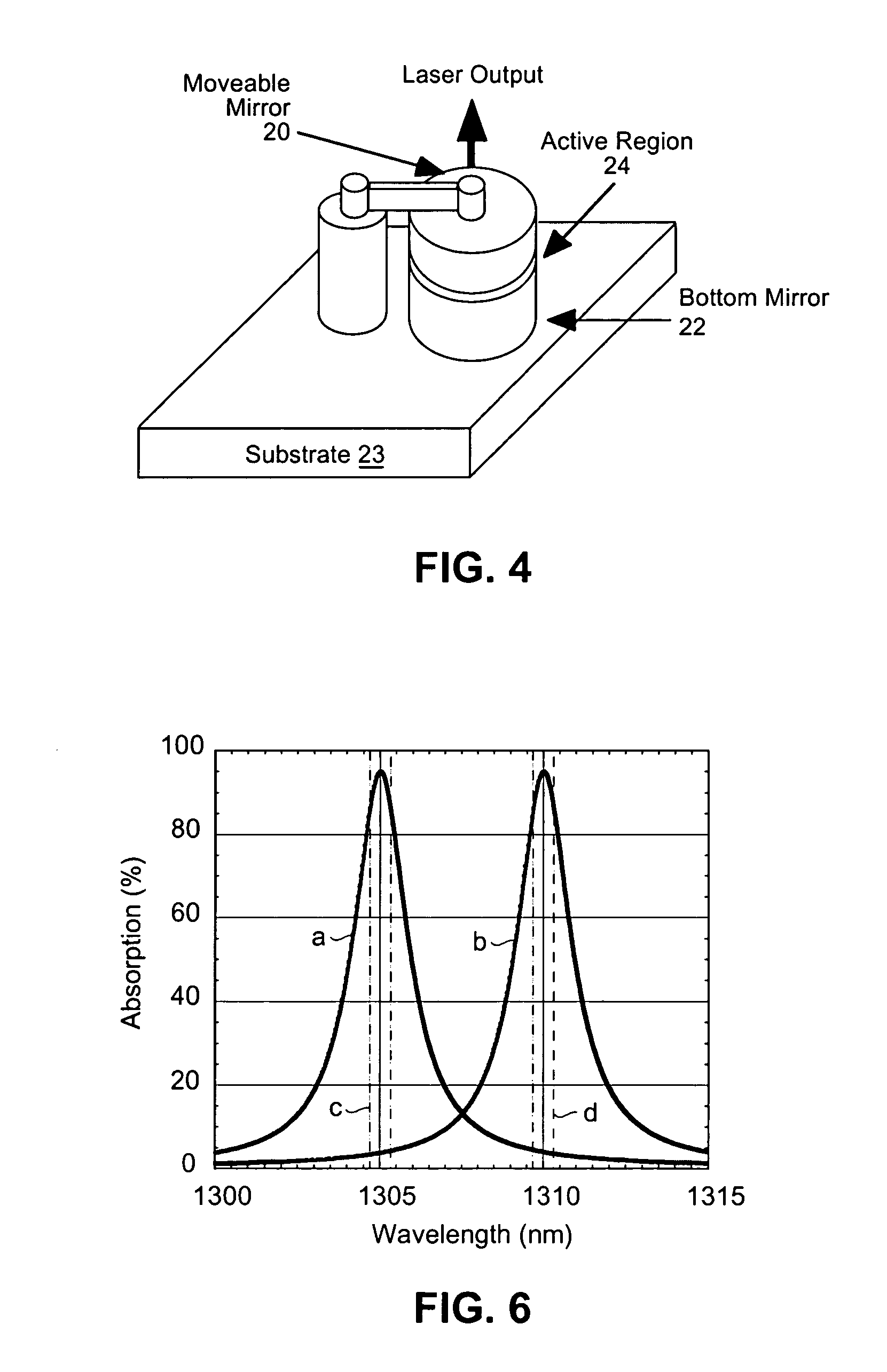Broad temperature WDM transmitters and receivers for coarse wavelength division multiplexed (CWDM) fiber communication systems
a fiber communication system and wavelength division multiplexing technology, applied in the field of wavelength division multiplexing (wdm) receivers and transmitters, can solve the problems of increasing cost, temperature fluctuation of semiconductor devices, and changing wavelength as a function of temperatur
- Summary
- Abstract
- Description
- Claims
- Application Information
AI Technical Summary
Benefits of technology
Problems solved by technology
Method used
Image
Examples
Embodiment Construction
[0027]The invention will now be illustrated in one or more preferred and alternative embodiments with reference to additional figures, and particularly FIGS. 5-10. A cite list of references is provided just below. Each reference is, in addition to those references cited above and below, and including that which is described as the invention summary and as background including FIGS. 14, hereby incorporated by reference into the detailed description of the preferred embodiments, as disclosing alternative embodiments of elements or features of the preferred embodiments not otherwise set forth in detail herein. A single one or a combination of two or more of these references and / or features may be consulted to obtain a variation of the preferred embodiments described in the detailed description. The references include:[0028]M. Oberg, S. Nilsson, K. Streubel, J. Wallin, L. Backbom, and T. Kling a, “74 nm wavelength tuning range of an InGaAsP / InP vertical grating assisted codirectional co...
PUM
 Login to View More
Login to View More Abstract
Description
Claims
Application Information
 Login to View More
Login to View More - R&D
- Intellectual Property
- Life Sciences
- Materials
- Tech Scout
- Unparalleled Data Quality
- Higher Quality Content
- 60% Fewer Hallucinations
Browse by: Latest US Patents, China's latest patents, Technical Efficacy Thesaurus, Application Domain, Technology Topic, Popular Technical Reports.
© 2025 PatSnap. All rights reserved.Legal|Privacy policy|Modern Slavery Act Transparency Statement|Sitemap|About US| Contact US: help@patsnap.com



